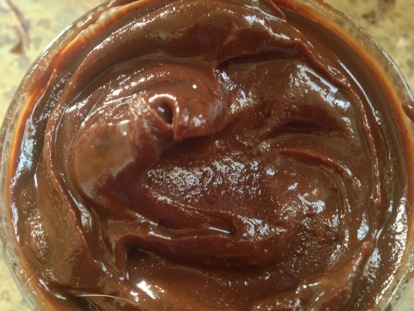New Cocoa Studies: Reduces Wrinkles and Alzheimer's Disease

For most people, chocolate is a delicious treat to enjoy in moderation. Some new scientific work, though, may give you an excuse to treat yourself more often.
The first, a study published in the Journal of Nutrition, examined the effects of cocoa on the moderately sun damaged skin of women aged 43 to 86. The participants drank flavanol-enhanced cocoa drinks, containing 320 mg flavanols daily**, over 24 weeks. It's been established in previous studies that flavanols in cocoa help maintain a healthy vascular system, relax blood vessels (lowering blood pressure), reduce blood clotting – an aspirin-like affect –reduce oxidative damage, and improve blood flow. This new study found that women who drank the flavanol - fortified cocoa drink experienced reduced wrinkles and increased skin elasticity, thereby reducing the effects of sun damage and aging. Flavanols, found in many plant-based foods, such as wine, tea, fruits and vegetables, have been found to have these effects in other foods as well as in cocoa. This study used the equivalent of 4 Tablespoons of cocoa daily.**
Cocoa flavanols may impact brain aging, too, according to a recent Journal of Alzheimer's Disease review. Previous research has shown that flavanols contribute to healthy brain aging and cognitive decline prevention by improving blood flow to the brain and reducing the oxidative and inflammatory damage which occurs with aging. But cocoa harvesting and production produces highly variable levels of flavanols in cocoa products. So scientists are looking for more consistent methods for developing cocoa flavanol formulas containing higher levels of flavanols. "The ultimate goal of this review is to provide recommendations for future developments of cocoa extracts as a therapeutic agent in AD [Alzheimer's Disease]."
These results could mean big things down the line for brain and skin health! Meanwhile, keep in mind that flavanols are found in tea, wine and many fruits and vegetables. Also, these studies use concentrated amounts of flavanols to get larger effects which would be more likely measurable in a food study.
Read more extensive information on cocoa, its history, research, and its health benefits...
Katherine’s Chocolate for Health Tips:
If you’re eating chocolate for health benefits, you’ll need to be very discriminating in your selections.
You’ll get more flavanols, and therefore health benefits, with less processing. The first choice is cocoa, which isn’t Dutch processed – as when cocoa is “Dutch processed with alkali” the flavanols are reduced. Look for chocolate which has the highest percentage of cocoa as possible and to save calories, look for chocolate with lower fat and sugar levels. In general, cocoa is your best first choice. Second choice is a semisweet or bittersweet chocolate with a high cocoa percentage. Some chocolates go as high as 85% cocoa, but legally can be as low as 35%. I recommend no more than an ounce a day, which may be about 110 - 150 calories, depending on the chocolate. Any more than that and you’re probably going to take in too many calories for weight control
**The numbers:
Type of Chocolate Mg Flavonols Calories1.3 oz Dark Chocolate Bars, Average*: 82 mg 187
1.3 oz Milk Chocolate Bars, Average*: 42 mg 198
1 TBSP Unsweetened Cocoa Powder, Average*: 75 mg 12
*USDA’s Nutrient Data Laboratory





